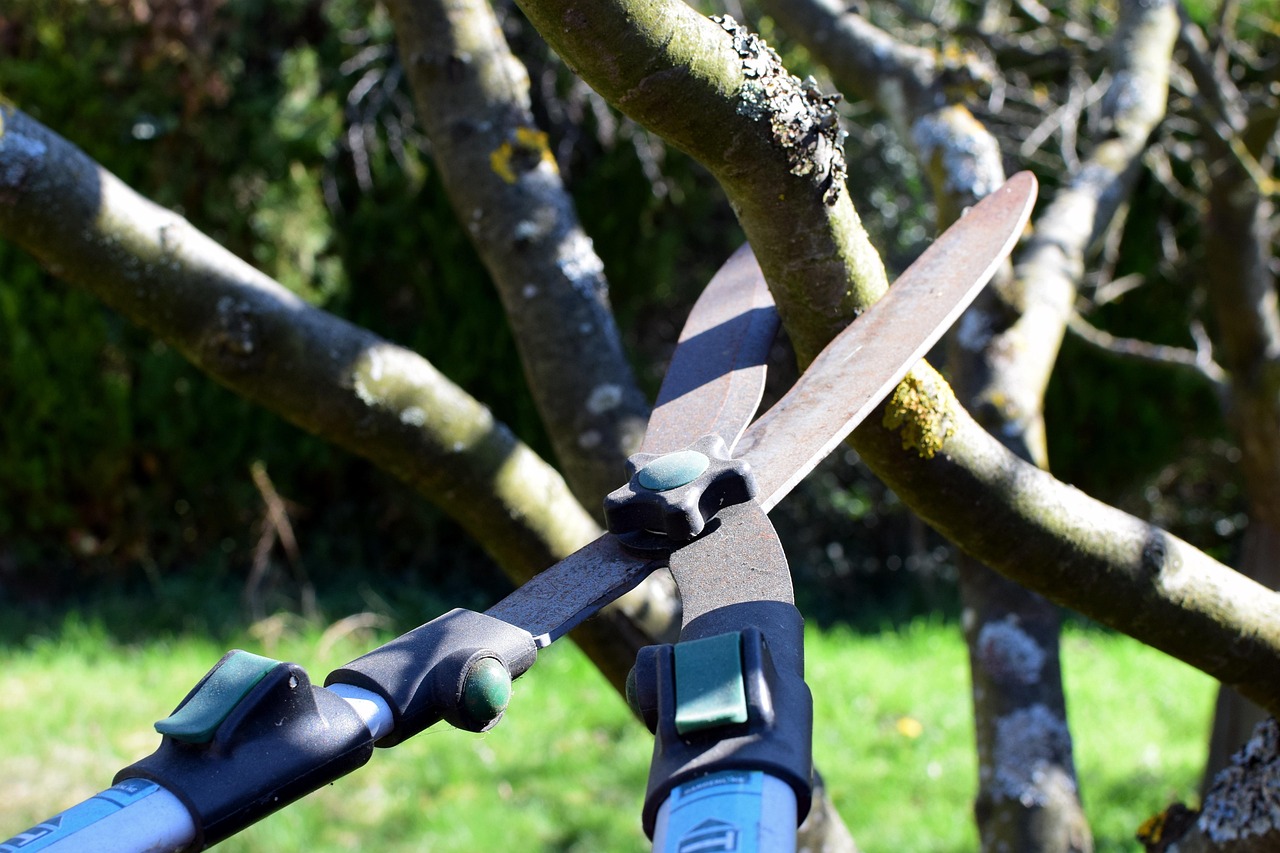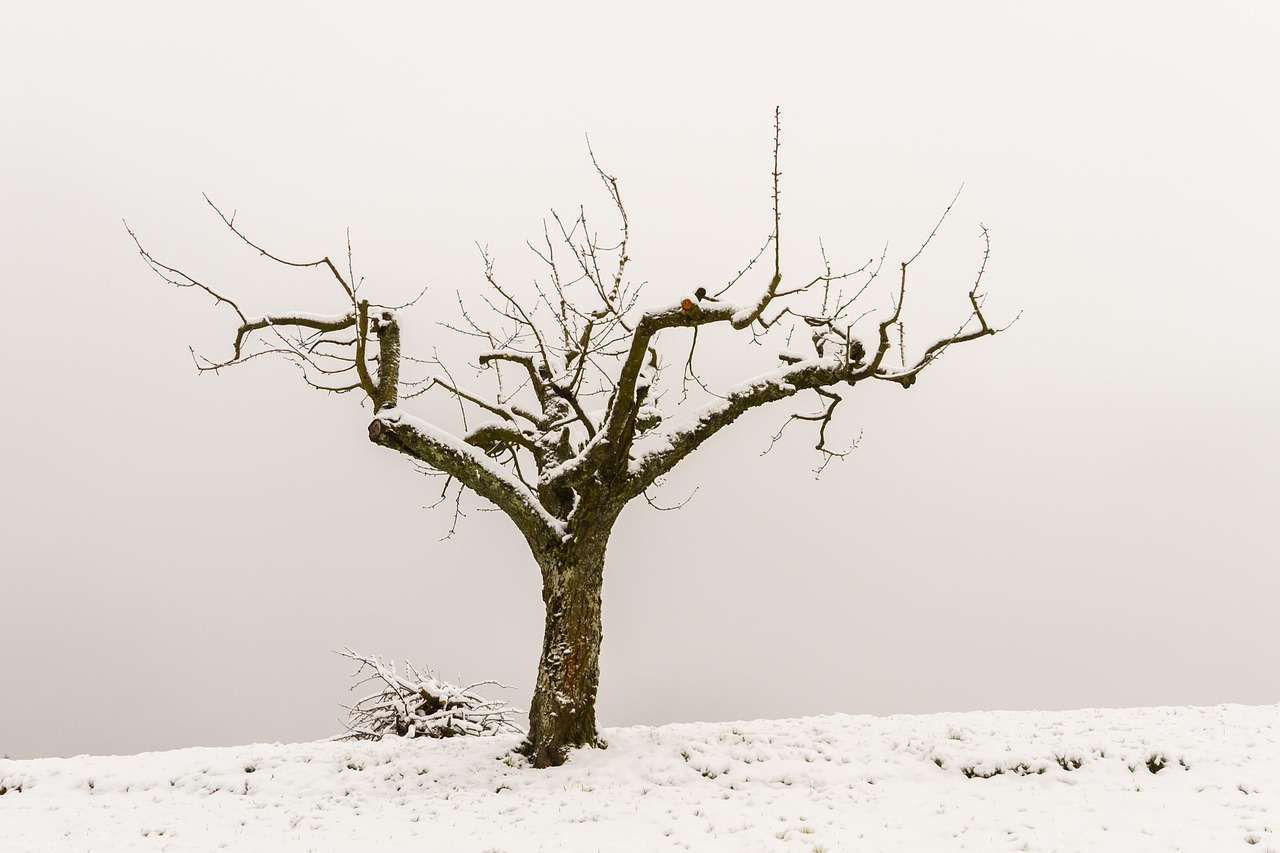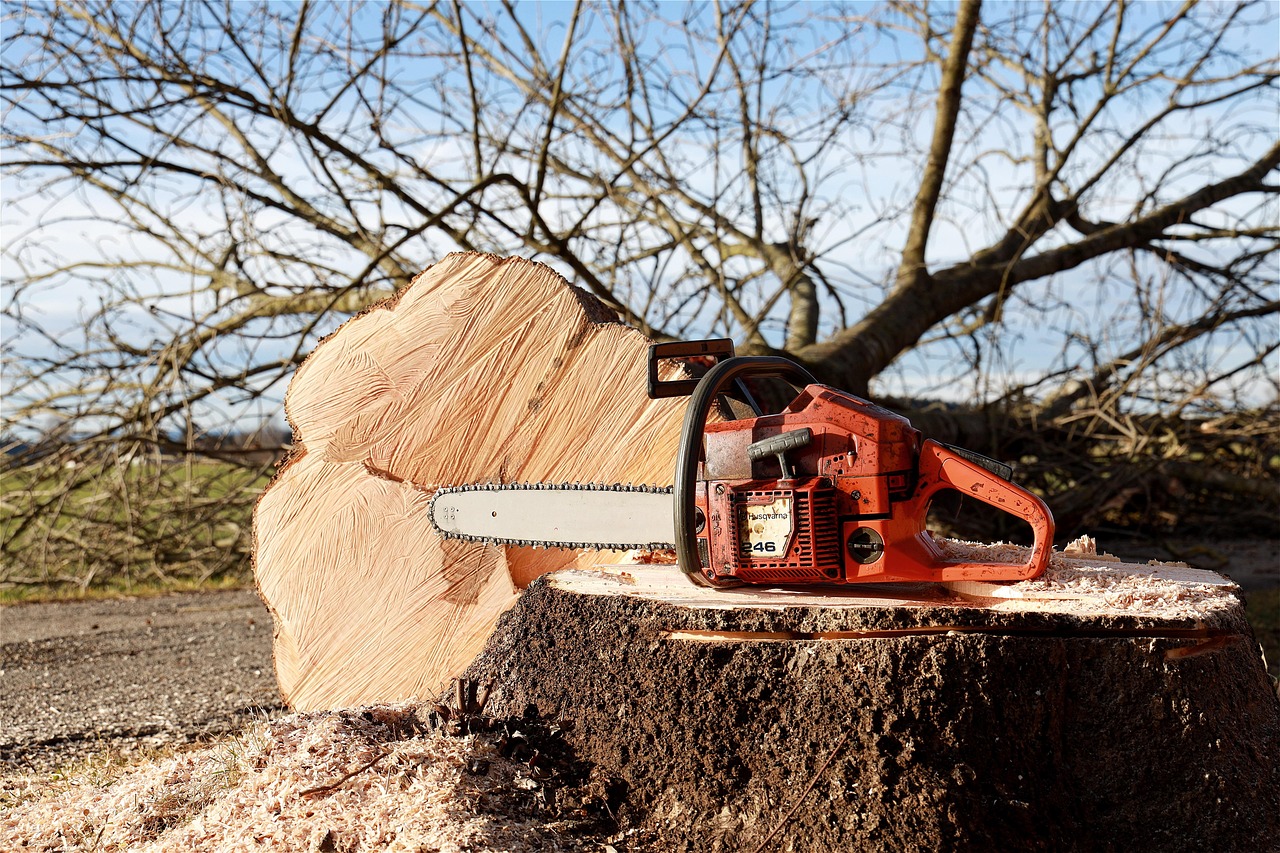Proper tree pruning is essential for healthy, vigorous growth and landscape beauty. Avoid common errors like over-pruning, improper timing, and using dull tools. Understanding correct techniques, tree biology, and safety measures ensures your trees thrive, remain healthy, and reduce the risk of disease or damage over time.
Tree pruning is an essential practice for maintaining the health and aesthetics of trees. Proper pruning enhances a tree’s structure, promotes growth, and can even prevent diseases. However, many tree owners make mistakes that can lead to adverse effects. Understanding these mistakes is vital for anyone looking to improve their trees’ longevity and appearance.

Pruning at the wrong time can hinder a tree’s natural growth cycle. Each species has its specific pruning window. For instance, spring-flowering trees should be pruned after flowering, while summer-flowering varieties are best pruned in late winter or early spring. Knowing the right time to prune is crucial for optimal growth.
Using inappropriate tools is another common mistake. Dull or incorrect tools can cause more harm than good. Sharp, clean tools make precise cuts that promote faster healing and reduce the risk of infections. It is essential to have the right equipment for the job, whether it be hand pruners, loppers, or saws.
Common Tree Pruning Mistakes
Many people make various mistakes when pruning their trees. Here are some of the most frequent errors:

- Over-pruning: Removing too much foliage can stress the tree, leading to poor growth.
- Improper cuts: Making cuts too close to the trunk or leaving stubs can damage the tree.
- Ignoring tree species: Each tree species has unique needs and timing for pruning.
- Pruning inappropriately: Cutting branches that are too thick or not understanding branch structure can harm the tree’s health.
- Failing to sanitize tools: Using dirty tools can spread diseases between trees.
Understanding the effects of these mistakes helps in making better decisions during the pruning process. The following table illustrates the potential impacts of common pruning errors on tree health:
| Mistake | Potential Impact |
|---|---|
| Over-pruning | Stunted growth and increased vulnerability to pests. |
| Improper cuts | Increased risk of disease and decay. |
| Ignoring species needs | Poor growth patterns and reduced flowering or fruiting. |
| Pruning at the wrong time | Weak branches and potential dieback. |
| Using unclean tools | Spread of pathogens and infections. |
In addition to these mistakes, many gardeners underestimate the importance of observing the tree’s growth patterns before making cuts. Each tree exhibits a unique growth habit that should be respected. Taking note of how a tree grows will guide you in making informed decisions about which branches to trim.
Another common oversight is pruning without a clear plan. Random cuts can lead to an unbalanced tree structure, resulting in a tree that is not only less aesthetically pleasing but also more prone to damage from wind or storms. Creating a strategy before beginning to prune helps maintain a healthy shape and promotes even growth.

Finally, neglecting safety precautions while pruning can lead to injury. Always wear protective gear such as gloves and goggles, especially when working with larger branches or using power tools. Ensuring that you have a safe environment for pruning is just as important as knowing how to handle the trees themselves.
By recognizing and addressing these common tree pruning mistakes, you can ensure that your trees remain healthy and vibrant. Proper techniques and timing will foster robust growth, allowing your trees to thrive for years to come.
Pro-Tips
- When I first started pruning, I learned the hard way that using dull tools causes ragged cuts, which take longer to heal and can invite disease. Always sharpen and sanitize your pruning tools before you begin.
- Early in my experience, I thought pruning any branch was beneficial. I soon realized that making precise cuts just outside the branch collar promotes faster healing and maintains the tree’s natural shape. Take your time and aim for clean, angled cuts.
- I used to prune without a plan, resulting in uneven trees that looked odd and were vulnerable to storm damage. Now, I sketch out a simple plan that considers the tree’s natural shape and growth pattern before making any cuts.
- When I first attempted to prune large branches, I didn’t use the three-cut method and tore the bark. Learning to make the initial undercut, followed by the top cut, prevented damage and made for cleaner removal.
- Initially, I ignored the best timing for pruning. Now, I pay close attention to the species-specific window—pruning spring-flowering trees after they bloom, for example—leading to healthier, more vibrant growth.
- When I was new to pruning around power lines or at high branches, I skipped using safety gear or proper equipment. Wearing gloves, goggles, and using pole pruners kept me safe and made my work much easier.
- At first, I underestimated the importance of cleaning up after pruning. Removing and properly disposing of cut branches prevents the spread of pests and diseases, keeping my yard healthier.
Understanding Tree Anatomy for Effective Pruning
To prune effectively, it is essential to understand tree anatomy. Knowing the basic parts of a tree can help you make informed decisions about which branches to cut and how to encourage healthy growth. A tree consists of various components that each play a role in its overall health.

Key Parts of a Tree
The following list outlines the main parts of a tree and their functions:
- Roots: Anchors the tree and absorbs water and nutrients from the soil.
- Trunk: Provides support and transports nutrients and water between the roots and leaves.
- Branches: Extend from the trunk and support leaves, flowers, and fruit.
- Leaves: Perform photosynthesis, converting sunlight into energy for the tree.
- Bark: Protects the tree from pests and environmental conditions.
- Cambium: A layer of growth tissue that produces new bark and wood.
- Xylem and Phloem: Xylem transports water from roots to leaves, while phloem distributes nutrients throughout the tree.
Understanding these components will assist you in making judicious cuts during pruning. For example, cutting too close to the cambium layer can disrupt nutrient transport, harming the tree’s health.
Timing Your Pruning Correctly
The timing of your pruning efforts is crucial for successful outcomes. Different trees have specific growth cycles and optimal times for pruning. Below are guidelines for pruning various types of trees:
Pruning Deciduous Trees
Deciduous trees lose their leaves in the winter. The best time to prune these trees is during their dormant season, typically late winter to early spring. Pruning during dormancy minimizes stress on the tree and allows it to heal quickly in spring when it begins to grow again.
Pruning Evergreen Trees
Evergreen trees retain their foliage year-round. The ideal time for pruning evergreens is in late spring or early summer after new growth emerges. Avoid heavy pruning in late fall or winter, as this can expose the tree to cold damage.
Flowering Trees
Flowering trees vary widely in their pruning needs based on whether they bloom in spring or summer:
- Spring-blooming trees: Prune after flowering to avoid cutting off buds that will bloom.
- Summer-blooming trees: Prune in late winter or early spring before new growth starts.
Adjusting your pruning schedule according to these guidelines will enhance the health and growth of your trees.
The Importance of Proper Technique
Using proper techniques during pruning can prevent damage to the tree and promote healthy growth. Here are some techniques to consider:
Making Clean Cuts
Always use sharp tools when making cuts. Clean cuts heal faster and reduce the risk of disease. When cutting branches, aim for a clean angle that promotes healing. The following points will guide you in making effective cuts:
- Aim to cut just outside the branch collar, which is the swollen area where the branch meets the trunk.
- Avoid cutting too close to the trunk or leaving stubs, as this can hinder healing.
- If removing large branches, make a three-cut method: first, cut from below to prevent tearing, then cut from above, and finally remove the stub.
Avoiding Topping
Topping is the practice of cutting off large sections of a tree’s crown. This method is harmful as it can lead to numerous issues:
- Weak regrowth that is susceptible to pests and diseases.
- A loss of natural shape, making the tree look unnatural and unbalanced.
- Poor photosynthesis due to reduced leaf area.
Instead of topping, focus on selective pruning that encourages healthy growth while maintaining the tree’s natural form.
Choosing the Right Tools for Pruning
The right tools make a significant difference in the effectiveness of your pruning efforts. Here are common tools used in pruning:
| Tool | Description |
|---|---|
| Hand Pruners | Ideal for small branches up to ¾ inch thick; provides precision cuts. |
| Loppers | Used for branches up to 2 inches thick; offers leverage for easier cutting. |
| Saws | Necessary for larger branches; available in manual or powered versions. |
| Pruning Shears | Best for shaping small plants and shrubs; ensures clean cuts without damaging stems. |
| Pole Pruners | Extendable tools for reaching high branches without climbing. |
Selecting appropriate tools based on branch size and location is essential for successful pruning. Always maintain your tools by sharpening them regularly for optimal performance.
Recognizing Signs of Stress in Trees
Before pruning, it is essential to assess the health of your trees. Recognizing signs of stress can help determine whether pruning is necessary or if other interventions are required. Trees can exhibit various symptoms that indicate they are not thriving.
Common Indicators of Stress
The following list outlines typical signs of tree stress:
- Wilting Leaves: Leaves appearing droopy or wilted may signal a lack of water or nutrients.
- Discoloration: Yellowing or browning leaves can indicate nutrient deficiencies or disease.
- Leaf Drop: Premature leaf drop, especially in summer, can be a sign of stress.
- Dead Branches: Dead or dying branches can suggest serious health issues or pest infestations.
- Cracked Bark: Cracks in the bark may indicate environmental stress or disease.
If you observe any of these symptoms, it is wise to consult with a tree care professional before proceeding with pruning. Professional assessment can lead to a better understanding of the tree’s condition and appropriate treatment options.
Tree Diseases and Pests: How They Affect Pruning
Tree diseases and pests can significantly impact the health of your trees. Understanding how these factors interact with pruning practices is crucial for maintaining healthy trees.
Common Tree Diseases
The following table lists some common tree diseases and their effects on tree health:
| Disease | Description |
|---|---|
| Root Rot | A fungal disease that attacks the roots, leading to wilting and eventual tree death. |
| Leaf Spot | Fungal or bacterial infections that cause spots on leaves, affecting photosynthesis. |
| Canker | A fungal infection that creates dead areas on branches or trunks, inhibiting growth. |
| Powdery Mildew | A fungal disease that appears as white powder on leaves, indicating stress. |
Pruning infected branches can help manage the spread of diseases. However, it is essential to sanitize your tools after cutting infected wood to prevent cross-contamination to healthy parts of the tree or other trees.
Pest Infestations
Pests such as aphids, beetles, and caterpillars can weaken trees by feeding on their leaves and stems. Signs of pest infestations include:
- Visible Insects: Check for insects on leaves, branches, and trunks.
- Webbing: Spiders or caterpillars may create webs on branches.
- Frass: Presence of insect waste, often found near infested areas.
- Leaf Damage: Holes or chewed edges on leaves indicate feeding activity.
If you suspect a pest issue, consider consulting a pest control expert before proceeding with pruning. They can provide guidance on treatment methods that will not harm the tree further.
The Role of Mulching and Watering in Tree Health
Proper mulching and watering practices play a significant role in maintaining tree health, especially after pruning. These practices help trees recover from stress and promote vigorous growth.
Benefits of Mulching
Mulching around the base of trees offers several benefits:
- Moisture Retention: Mulch helps retain soil moisture, reducing the need for frequent watering.
- Weed Suppression: A layer of mulch inhibits weed growth, which competes for nutrients and water.
- Temperature Regulation: Mulch regulates soil temperature, protecting roots from extreme heat or cold.
- Nutrient Addition: Organic mulches break down over time, adding nutrients back into the soil.
Apply a 2 to 4-inch layer of organic mulch around the base of trees, but keep it a few inches away from the trunk to prevent rot.
Watering Practices
Proper watering is crucial for tree recovery after pruning. Here are some guidelines for effective watering:
- Deep Watering: Water deeply and infrequently to encourage deep root growth. This practice helps trees develop a robust root system.
- Avoid Overwatering: Too much water can lead to root rot. Ensure that the soil drains well.
- Monitor Weather Conditions: Adjust watering schedules based on rainfall and temperature changes.
Following these watering practices will help trees recover more effectively after pruning and remain healthy throughout their growing season.
Engaging Professional Help for Pruning
If you feel uncertain about your pruning skills or if your trees require significant work, hiring a professional arborist is a wise choice. Arborists are trained in tree care and can provide valuable services such as:
- Expert Assessment: Professionals can evaluate tree health accurately and recommend appropriate treatments.
- Safe Pruning Techniques: Arborists use specialized tools and techniques to ensure safety while minimizing damage to trees.
- Disease Management: They can identify diseases and pests early, providing solutions to manage them effectively.
A professional touch can significantly enhance the long-term health and appearance of your trees. Investing in expert help may save you time and effort while ensuring optimal results.
Additional Tips for Successful Tree Pruning
In addition to avoiding common mistakes and understanding the fundamentals of tree care, there are several best practices that can enhance your pruning efforts. These tips will help you achieve cleaner cuts and healthier trees.
Regular Maintenance Pruning
Establishing a routine maintenance schedule is essential for the long-term health of your trees. Regular pruning helps to:
- Encourage Healthy Growth: Frequent, light pruning can stimulate new growth and maintain the tree’s shape.
- Remove Dead or Diseased Wood: Regular checks can help identify and remove compromised branches before they affect the entire tree.
- Improve Airflow and Light Penetration: Thinning out crowded areas allows more light to reach inner leaves and improves air circulation.
By committing to regular maintenance, you can avoid the need for drastic pruning, which can stress the tree and lead to other issues.
Correct Post-Pruning Care
After pruning, it is crucial to care for your trees properly. Here are some practices to consider:
- Monitor for Signs of Stress: Keep an eye on the tree for any signs of stress after pruning, such as excessive leaf drop or discoloration.
- Avoid Fertilizing Immediately: Wait until new growth appears before fertilizing, as too many nutrients can stress a freshly pruned tree.
- Water Adequately: Ensure the tree receives sufficient water, especially in dry conditions, to support recovery.
These practices will help your trees recover quickly and maintain their health after pruning interventions.
Understanding Local Regulations and Tree Preservation
Before pruning or removing trees, it’s important to understand local regulations regarding tree care. Many municipalities have specific guidelines for tree maintenance to preserve urban forests and promote ecological balance. Consider the following points:
- Check Local Laws: Some areas require permits for major pruning or tree removal, especially for protected species.
- Consult Community Resources: Local arboricultural organizations or urban forestry departments can provide guidance on best practices and legal responsibilities.
- Promote Biodiversity: When choosing trees for planting or maintaining, opt for native species that support local wildlife and ecosystem health.
By adhering to local regulations and promoting biodiversity, you contribute to a healthier environment while caring for your trees.
Final Thoughts
Tree pruning is a vital aspect of tree care that can significantly influence the health and longevity of your trees. By avoiding common mistakes such as over-pruning, improper timing, and using inadequate tools, you can ensure that your pruning efforts yield positive results. Understanding tree anatomy, recognizing signs of stress, and employing proper techniques will lead to thriving trees that enhance your landscape.
Moreover, engaging a professional arborist when needed can provide expert insight and ensure safe practices are followed. Regular maintenance, correct post-pruning care, and adherence to local regulations further contribute to successful tree management. Remember that healthy trees not only beautify your surroundings but also play a critical role in supporting wildlife and improving air quality.
As you embark on your journey in tree care, keep these guidelines in mind. With patience, knowledge, and attention to detail, your trees will flourish for years to come.
